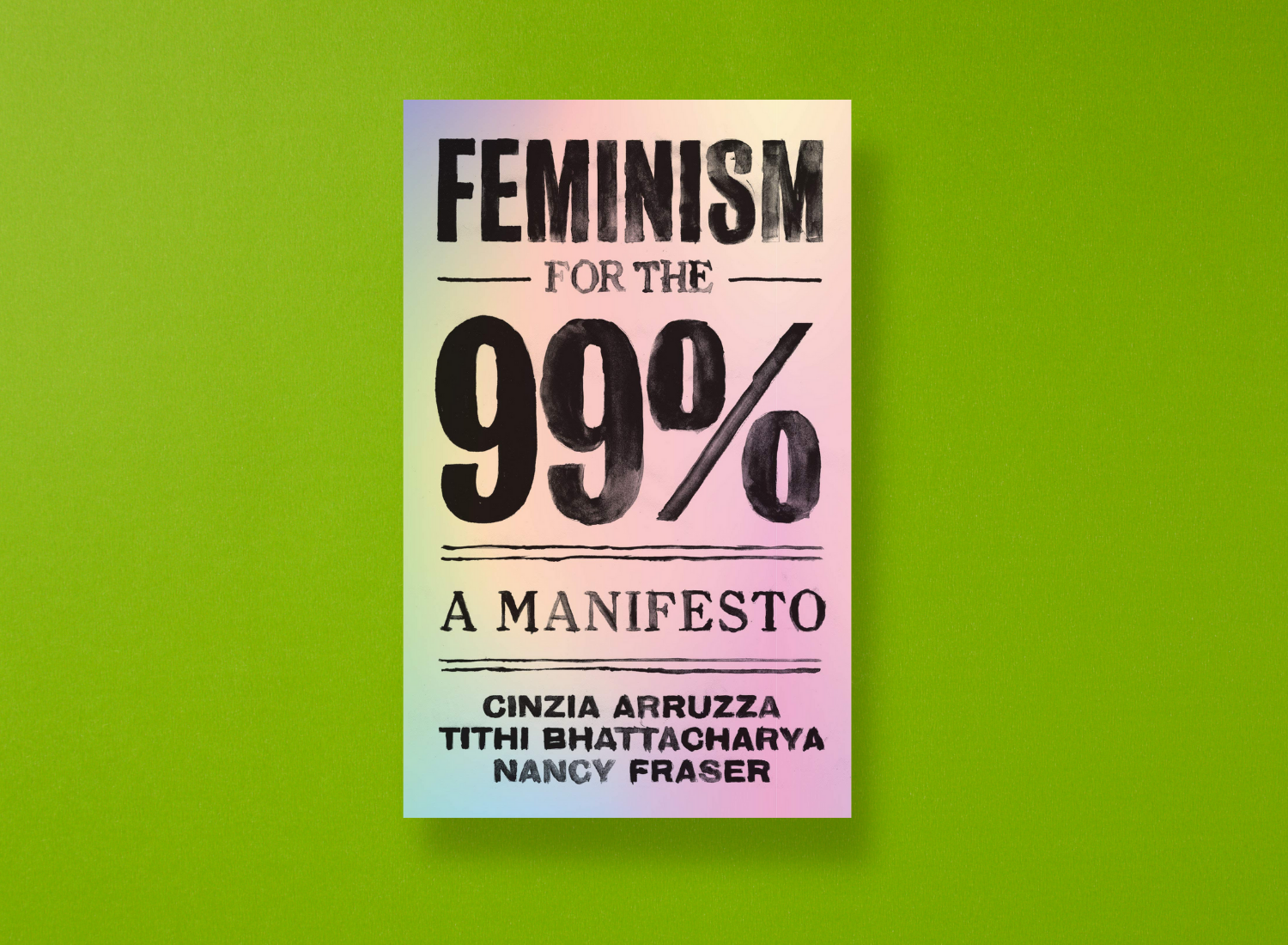“Unaffordable housing, poverty wages, inadequate healthcare, border policing, climate change—these are not what you ordinarily hear feminists talking about. But aren’t they the biggest issues for the vast majority of women around the globe?”
Taking a strong anti-capitalism stance, Feminism for the 99%: A Manifesto by Cinzia Arruzza, Tithi Bhattacharya, and Nancy Fraser is a short book made up of eleven theses, each addressing different facets of what it means to be a feminist for the 99%. Co-authored by the women who organised and vocally supported the International Women’s Strike (2017-18).
Although this little book has been around for a couple of years, right now it feels more relevant than ever.
Why now?
The climate emergency, an ever-increasing gap between income and the cost of living, the ongoing institutional discrimination – these are just some of the big issues affecting society right now that are discussed in this manifesto. The authors argue that in order to be a ‘feminist for the 99%’ (as opposed to the #GirlBoss type of faux-feminist for the 1%), we ought to focus on the intersections of the ever-worsening issues affecting society, and on the big bad word that plays a huge part in creating and exacerbating humanity’s struggles – capitalism. The authors stress that strength lies in numbers, and uniting people from all the different movements fighting to end social inequalities is the right way forward if we want to take a stand against capitalism.
Two statements from this book stand out: one – capitalism is out of control, and two – feminism cannot coexist with capitalism.
It is true that capitalism has gone unchecked for too long. A recent example of this is the Intergovernmental Panel on Climate Change (IPCC) report which found that our climate has reached a critical emergency and it’s induced by humanity, i.e. mega corporations such as fossil-fuel companies, and others who benefit from destroying the environment. With capitalism, it will always be profit above people.
It’s no surprise the manifesto places capitalism as the antithesis of feminism – the two cannot logically coexist. Capitalism is the major leading cause of global suffering, inequality, and institutional corruption which hurt the most vulnerable parts of society, including women. The authors brilliantly refute the idea that we can reach feminist goals by becoming powerful and successful within capitalistic bounds, throwing the outdated and regressive idea of neoliberal ‘feminism’ out of the window. Feminism must strive for equality and justice for all, not just the privileged few, so trying to make feminism fit in a capitalist system that exploits the vulnerable majority just won’t work.
A small irony
One flaw with this book is that despite being titled Feminism for the 99%, the content is written largely for an academic audience, or at the very least for people who already have a good understanding of feminist and political theory. In one of the authors’ own words, the manifesto is supposed to be a “short piece of writing that’s intended to be popular and accessible rather than academic”, yet in reality it is full of political terminology and complex ideologies, accessible only to those who have already been introduced to the topics.
One could also argue that the authors missed a chance to include guidance on how to achieve their manifesto’s aims, rendering the content into more of a theoretic work rather than a call to action which it purports to be. This is what we want, but let others figure out how to achieve it, it seems to say.
Despite the setbacks
The authors have produced a persuasive call to action, and a source of inspiration for further reading. Although brief, the manifesto connects the different issues we face in this age and does the important work of underlining the main cause – the exploitative nature of unchecked capitalism. It states that the only type of feminism that truly supports the most vulnerable and marginalised groups is anti-capitalist feminism. While it successfully outlines the ‘what’ and the ‘why’, the manifesto falls short of mentioning the ‘how’ in the fight for a more equal society through anti-capitalist feminism. However, it is an important piece and certainly worth a read if you don’t mind a bit of heavy terminology.
Overall, a short book you can read in one sitting, Feminism for the 99% feels like an appetiser served before the main course, leaving you hungry for more.
You can get your own copy of Feminism for the 99%: A Manifesto from Verso.





